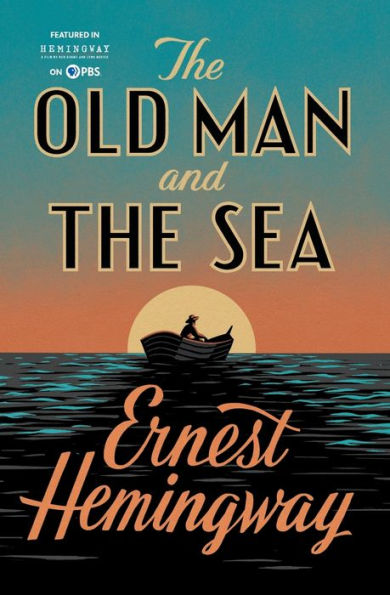INTRODUCTION: THE RIPENING OF A MASTERPIECE
The April 1936 issue of Esquire contained an article entitled "On the Blue Water: A Gulf Stream Letter," written by the magazine's featured contributor Ernest Hemingway. It was a rambling little piece that began with a debate between the author and a friend on the relative thrills of deep-sea fishing and big-game hunting. After a page or so of badinage, Hemingway embarks on a passionate apologia for the joys and beauty of life on the Gulf Stream. That and the other great ocean currents are "the last wild country left." He goes on to describe his own fishing experiences, adding stories told to him by his Cuban mate Carlos. One of the latter was about a giant marlin:
...an old man fishing alone in a skiff out of Cabañas hooked a great marlin that, on the heavy sashcord handline, pulled the skiff out to the sea. Two days later the old man was picked up by fisherman sixty miles to the eastward, the head and forward part of the marlin lashed alongside. What was left of the fish, less than half, weighed eight hundred pounds. The old man had stayed with him a day, a night, a day and another night while the fish swamdeep and pulled the boat. When he had come up the old man had pulled the boat up on him and harpooned him. Lashed alongside the sharks had hit him and the old man had fought them out alone in the Gulf Stream in a skiff, clubbing them, stabbing at them, lunging at them with an oar until he was exhausted and the sharks had eaten all that they could hold. He was crying in the boat when the fishermen picked him up, half crazy from his loss, and the sharks were still circling the boat.
-- that Hemingway returned to the "Santiago story," as he called it. He was living then in his home in Cuba and able to devote himself to the work. The writing went unusually well, and Hemingway was overjoyed by this surging of creative powers.
As he had originally planned to do, Hemingway took the external details of the story and presented them from the point of view of the fisherman. He thus made it possible for the reader to participate imaginatively in the story. That effect was always Hemingway's primary aim as a writer.
The story's spiritual themes enhance its meaning and impact. In the thoughts of Santiago, the reader shares the beliefs of a simple fisherman whose pride in his endurance is combined with the fatalistic sense that he has "gone out too far," and whose efforts to kill his prey are combined with a reverence for life. It is impossible to read this story without believing that in many respects it represents Hemingway's own ideals of manhood.
For a time, it was his plan to publish the tale as part of a collection, but he accepted an unusual offer to have it appear in a single installment in Life magazine. Its appearance in book form followed shortly.
The Old Man and the Sea was an immediate success throughout the world. It was specifically cited when the Nobel Prize for Literature was awarded to Hemingway in 1954. In fact, its success was so great that it lead to a broad revival of interest in all of Hemingway's works which has continued to the present day. It is a curious fact of literary history that a story which describes the loss of a gigantic prize provided the author with the greatest prize of his career.
-- Charles Scribner Jr.
Copyright © 1952 by Ernest Hemingway
Copyright renewed © 1980 by Mary Hemingway


